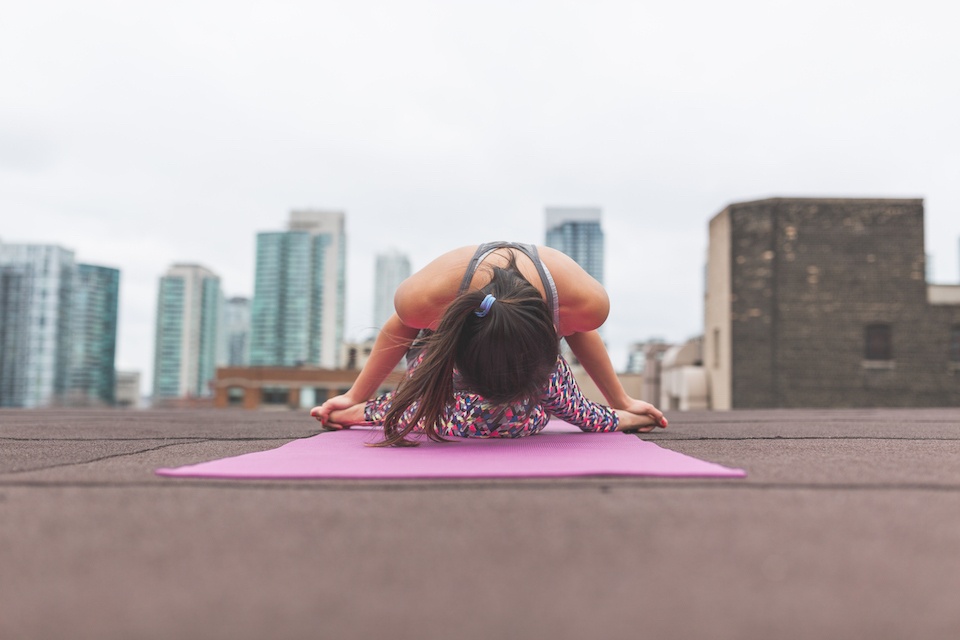As a mental health professional, I’m often faced with questions about how to reduce suffering; how to manage tough transitions; and, perhaps most often, how to experience real happiness. As it turns out, it’s this third question that people tend to struggle with the most. For so many of us, happiness is an ideal we’ve been sold on that’s so transient and elusive as to make us wonder whether it exists at all. We all want it, but most of us have no idea where to find it.
When we’re young, happiness is much easier to access, so much more lasting an experience. But as time goes on and our responsibilities and obligations increase, happiness tends to register far less frequently on our emotional radar. Why is this, and what can we do about it?
What I’ve learned in my years of practicing therapy and studying the science of happiness and wellbeing is that happiness is—as the worn-out cliché suggests—about the journey, not the destination. It’s an experience that we cultivate in the day-to-day encounters of our lives—one that we’re capable of creating at will and get to experience more vividly the more we conjure it. There are many ways to harness happiness and hack your brain to experience it more often; here are eight.
1. Smile for “no reason.” It might sound silly, but this one really works wonders. Research shows that when your body works the muscles that form a smile, a signal gets sent to your brain, letting it know that you’re happy. But don’t’ rely on the research; try this out for yourself. Chances are, the more you smile, the better you’ll feel—and, of course, the better you feel, the more you’ll smile. Before you know it, you’ll have generated a fun feedback loop that sparks happiness for you and everyone you meet. We’re hardwired to respond to nonverbal forms of communication, and smiles are the universal language for connection, joy, and positive vibes. As you practice smiling for no reason at all, you’ll see more smiling faces around you. And if those faces continue to move through the world transmitting that positive energy, you’ll have created a ripple effect of happiness; not only will you be happier, but the world will be that much happier, too. Put this little trick in practice, and you’ll be off to a fabulous start.
2. Practice kindness. Let’s be real; it feels really good to have others be kind to us. And, the research is clear, it feels just as good to be kind to others. When we go through the world guarded, jaded, and walled off to other people, we isolate ourselves from a source of happiness and wellbeing that we’d otherwise get to access. It might take a little practice, especially if you’ve been hurt by other people and feel the need to protect yourself, but making kindness a deliberate practice promises to yield great rewards in terms of happiness and general positivity. Being kind to others promotes good feelings in them, of course, but it also delivers us a powerful happiness boost. Beyond that, it has the potential to enrich and strengthen our relationships with others, allowing us to feel connected and supported—both of which are vital contributors to happiness.
3. Be in awe. This is one of my favorites. Recent research has shown that a regular experience of being in awe is associated with decreased rates of depression and anxiety. When we do, read about, witness, or otherwise experience things that make us feel a true sense of how awesome life can be, we make a significant contribution to our overall wellbeing. And this is something we can deliberately practice in an effort to generate those good vibrations. Go for a walk in nature; marvel at the intricacies of artwork or the architecture in your neighborhood; read about new scientific discoveries or human achievements; watch a newborn baby discover the world. As much and as often as you can, put yourself in a position to be in awe, and watch how much more easily happiness comes to you.
4. Affirm your worthiness. With so many messages telling us who we should be—the ones coming from the media, communicated silently by the people around us, or echoing in our own minds—we sometimes need to strive to remember that we are enough. Doing this for ourselves, intentionally and regularly, can boost our sense of self-confidence and increase our sense of contentment. To fold this into your happiness practice, regularly check in with how you’re thinking and feeling throughout the day. Whenever you find yourself caught in the web of comparing, criticizing, or cutting yourself down, repeat worthiness-boosting affirmations. You might say something like, “I am whole and complete, exactly as I am,” “I am worthy of love and connection,” “I am worthy of forgiveness, including my own,” or create your own affirmations that help you remember your worthiness. Watch your happiness meter rise.
5. Tune out. We already know that we live in a digital era, in which technology pervades every aspect of our lives. But as many advantages as this provides us, there are also some pretty considerable drawbacks to consider. The research is clear that if we aren’t mindful about how we engage online, we risk doing harm to our happiness. The more mindlessly we engage online, the less connected we feel to our actual lives. And this is worth adjusting, because as it turns out, mindfulness—the practice of deliberately connecting to our actual experience in the moment—is known to increase happiness. To harness happiness by tuning out, practice limiting your online engagement. Take social media fasts; dedicate time to going offline; cultivate your real-life relationships; limit your TV time, and try a new activity instead.
6. Drop in. Our waking hours are spent swimming through a stream of distractions that vie determinedly for our attention. From the moment we wake up until the moment we go to sleep, many of us are either busy doing something or thinking about the next thing we’ll do. But when we fill our days with work and obligations, constantly thinking about what’s next, we get tired. And often when we’re tired, we numb ourselves out in an effort to rest and disconnect. There’s nothing wrong with this, except that it often doesn’t work very well. Instead of feeling refreshed, we can feel even less energized. Worse, we can find ourselves lethargic, bored, or apathetic. Developing practices that connect us inward can help us increase our happiness as we learn to nurture and give to ourselves. Meditation is a remarkably effective tool for helping us turn inward and generate positive feelings. Exercise is another great way for us to practice connecting with ourselves and attuning to our mind and body. Journaling, another useful tool for hacking happiness, helps us to learn from the wisdom of our own free-flowing thoughts and let go of things in our minds that weigh us down and contribute negatively to our lives. Try incorporating one or all of these into your daily life, and enjoy the uptick in happiness that comes with it.
7. Get your hands dirty. One of the best ways to experience more happiness is to get in touch with our abundance, and helping others is a marvelous way to do this. Volunteering has been shown to boost our sense of contentment, gratitude, and overall wellbeing. But we don’t need to be Rockefellers to make this happen. When we contribute to others, in ways both large and small, we also contribute to our own happiness. Take some time to seek ways that you can get involved in your world and your life, and enjoy the bonus prize of a sizable boost in happiness.
8. Get your feet dirty, too. This final happiness hack is my personal favorite. I don’t know about you, but I have fond recollections of how fun and freeing it felt to be a child. Back when my responsibilities were few and my options felt limitless, happiness always seemed to be right at my fingertips. If you can relate to this, then you’ll be glad to know that engaging in play activities is one of the best ways to experience more happiness. Let loose, access your imagination, and be creative. And if you want to up-level your efforts to get happier through play, take the fun outdoors! Being in nature is an unparalleled mood-booster. Kick of your shoes, ground yourself in the earth, and soak up all the good vibes it has to share with you.
I hope these 8 simple hacks set you on the path toward inviting more happiness into your life. Got some happiness hacking tips of your own? Share them with me in the comments section below!










